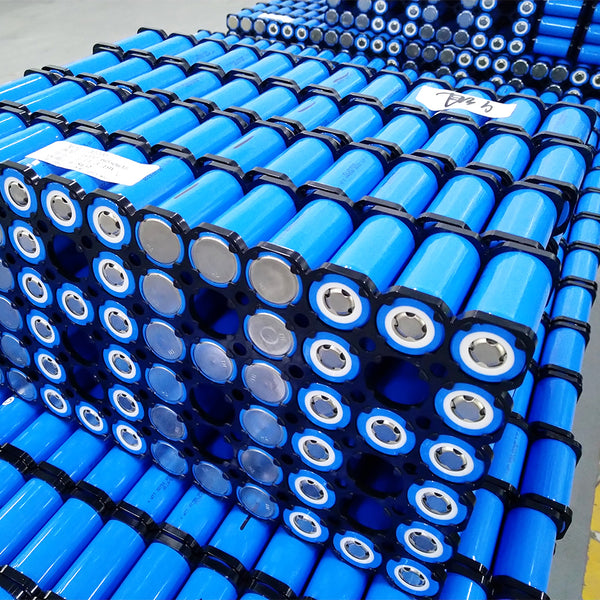The capacity of a lithium-ion battery refers to the amount of electricity it can hold, and the unit is usually "Ampere Hour" or "mAh". For example, the capacity of lithium-ion battery is 500mAh, which means that if the current of the battery is 10mA, it can work continuously for 50 hours. Lithium-ion batteries are generally tested with a 0.5C discharge.
1. Fully charge the battery, the voltage of a single lithium-ion battery after fully charging is 4.2V;
2. Use a multimeter to use a lithium-ion battery with a constant current of 0.5C, discharge relative to the battery capacity, and set the termination voltage to 3v;
Lithium-ion battery manufacturers teach you how to test the capacity of lithium-ion batteries. The capacity of the lithium-ion battery is the premise of how long the equipment can be used. Lithium-ion battery manufacturers generally have special equipment for testing to ensure the quality of the shipped products. The capacity test is based on the full-charge voltage and the set end voltage as parameters, because the lowest discharge voltage of a lithium-ion battery is 2.75V, so a voltage less than 3V has no meaning for lithium-ion battery testing.
The capacity of a lithium-ion battery refers to the amount of electricity it can hold, and the unit is usually "Ampere Hour" or "mAh". For example, the capacity of lithium-ion battery is 500mAh, which means that if the current of the battery is 10mA, it can work continuously for 50 hours. Lithium-ion batteries are generally tested with a 0.5C discharge.
1. Fully charge the battery, the voltage of a single lithium-ion battery after fully charging is 4.2V;
2. Use a multimeter to use a lithium-ion battery with a constant current of 0.5C, discharge relative to the battery capacity, and set the termination voltage to 3v;
3. Multiply the discharge current by the constant current discharge time to get the battery capacity; inspection: if the constant current discharge cannot reach two hours, then the nominal voltage is not enough, and the lithium-ion battery may be counterfeit.
Lithium-ion battery manufacturers teach you how to test the capacity of lithium-ion batteries

1. Charging termination voltage: It is also the no-load voltage, that is, the highest voltage when not working, generally 4.2V.
2. Working/nominal voltage: It is also the load voltage, and the voltage during normal operation is generally 3.7V.
3. End-of-discharge voltage: the voltage at which the battery cannot work. There are different designs of 3V and 2.75V.
To start the test, first use the charger to fully charge the battery, the full charge voltage is 4.2V, then use the multimeter as a constant current load, discharge at 0.2C (that is, 1000×0.2=200mA), and set the discharge voltage of the multimeter to 3V, if discharge When the time reaches 5 hours, it means that the battery is qualified. The current lithium-ion battery can generally be discharged to 2.75V, and the discharge depth is 80% the same as the previous 3V termination voltage, but it can be left for 8 hours, indicating that the power of the lithium-ion battery has increased.
The above so-called qualified and unqualified are related to the nominal capacity. And the nominal capacity = discharge current × discharge time. If the above-mentioned discharge time is not enough, it means that the capacity marked on the lithium-ion battery is not enough to 1000mAh, which is an act of false capacity and a deception to consumers.
Lithium-ion battery capacity testing methods are basically the same as battery discharge performance testing methods, including constant current discharge method, constant resistance discharge method, constant voltage discharge method, constant voltage, constant current discharge method, continuous discharge method and intermittent discharge method. According to the discharge time and the size of the current, the capacity of the battery can be calculated.
Constant current method circuit: The advantage of using this method is that the current is stable during the discharge process, so its capacity can be easily calculated.
Sorting and testing: Batteries of different types and degrees of newness and oldness cannot be used in order to avoid overcharging and overdischarging due to mismatching of battery capacity. In addition, in a battery pack, its overall performance is generally determined by the worst performing battery. For primary batteries, capacity detection is destructive, so only strict production control can maintain product consistency.
The above is the lithium-ion battery capacity test method, the level of battery capacity is an important content to determine the quality of lithium-ion batteries.

